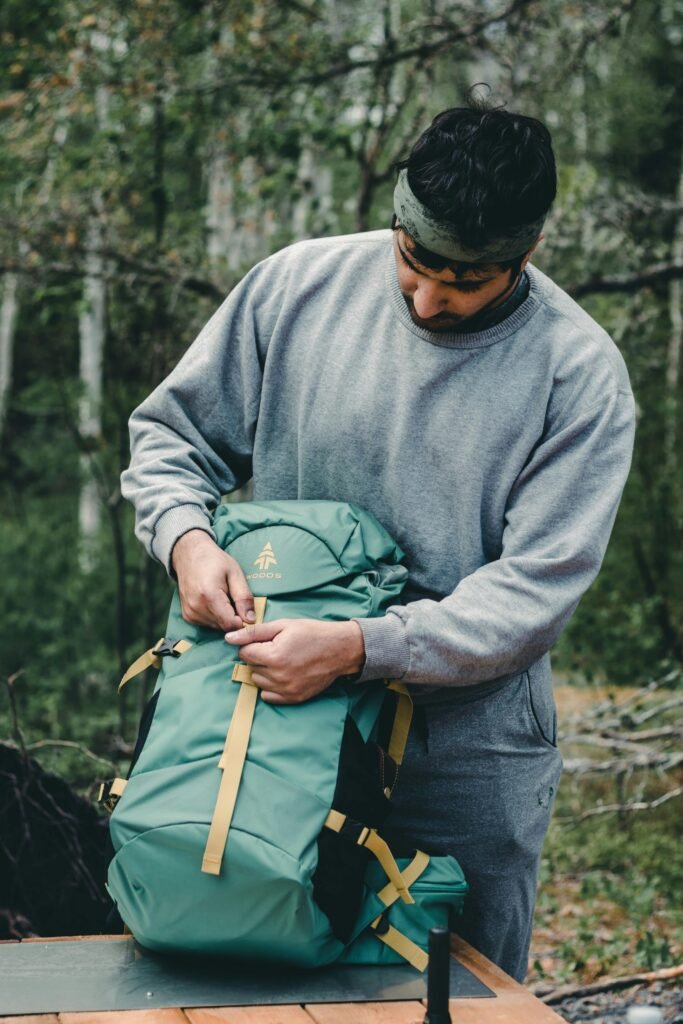
Introduction
When crisis strikes, one question separates calm from chaos:
Do you stay where you are — or do you leave?
Preppers call it the bug-out vs bug-in decision, and it’s one of the hardest choices you’ll ever make regarding bug-out vs bug-in strategies. The wrong call in the bug-out vs bug-in scenario can leave you trapped in danger — or stranded on the road with nowhere to go. Understanding the bug-out vs bug-in options is crucial for survival.
This guide breaks down the real-world logic behind each option: how to know which path fits your life, what mistakes to avoid, and how to build flexibility into your survival strategy.
Whether you live in an apartment, a rural homestead, or somewhere in between, you’ll finish this article knowing exactly when to stay put and when to move out.
This guide outlines the factors to consider in the bug-out vs bug-in dilemma, helping you determine which approach aligns best with your lifestyle and needs.
This guide will help clarify the bug-out vs bug-in considerations you must weigh, breaking down the real-world logic behind each option: how to know which path fits your life, what mistakes to avoid, and how to build flexibility into your bug-out vs bug-in survival strategy.
1. Defining the Terms
Understanding the implications of bug-out vs bug-in situations prepares you for any crisis.
- Bug-In → Sheltering at home. You fortify your house, live off stored supplies, and ride out the crisis until it stabilizes.
- Bug-Out → Leaving home for a safer location — a cabin, relative’s property, or designated retreat — before or during a disaster.
Each has pros and cons, and no single answer fits everyone. Your environment, family, resources, and risk profile decide which one wins.
2. When Bug-In Makes Sense
Understanding when to apply bug-in strategies in the bug-out vs bug-in discussion is vital, especially if you’re already in a secure position.
Bug-In works best when home is already your safest, best-equipped position.
Choosing bug-in is often the best option when considering the bug-out vs bug-in dilemma, especially when home is already your safest, best-equipped position.
✅ Best for:
- Stable or short-term disruptions (power outage, winter storm, local unrest).
- Well-stocked homes with food, water, heat, and security.
- Families with children, elderly, or pets who travel poorly.
🏠 Advantages
In summary, understanding the nuances of bug-out vs bug-in strategies is essential for effective disaster preparedness.
- Immediate shelter and comfort.
- Access to your full stockpile and tools.
- Familiar environment reduces stress.
- Lower exposure to road hazards or conflict.
⚠️ Risks
- If utilities fail long-term, you become a stationary target.
- Fire, flood, or contamination can force evacuation anyway.
- Complacency: people wait too long to act.
Prepper Insight: Bug-In success depends less on bravery and more on infrastructure — water, power, sanitation, and security that work when the grid doesn’t.
3. When Bug-Out Is the Smarter Move
Sometimes staying is the bigger risk in the bug-out vs bug-in debate. Bug-Out shines when your home turns from asset to liability.
✅ Best for:
- Wildfires, floods, chemical leaks, or nuclear events.
- Widespread civil unrest or government evacuation orders.
- Long-term grid failure or resource collapse.
🚗 Advantages
When considering bug-out vs bug-in, remember that being overly cautious can lead to missed opportunities for safety.
- Mobility = options. You can reach safer zones or resources.
- Avoids entrapment in dangerous areas.
- Enables regrouping with extended family or community.
⚠️ Risks
Balancing your bug-out vs bug-in strategy can provide you with the flexibility needed to adapt to rapidly changing scenarios.
- Roads clog fast; fuel runs out faster.
- Weather, injury, or vehicle failure can trap you mid-route.
- You can’t carry everything — logistics matter.
Prepper Insight: Bug-Out success is 80% planning, 20% luck. Without a destination, you’re not bugging out — you’re just leaving.
Remember, bug-out vs bug-in choices are often driven by the situation, so be prepared to adapt.
4. How to Decide: Stay or Go
Use this checklist to guide your decision in real time.
🧭 Bug-In Indicators
- Home structure is safe and defensible.
- You have at least 30 days of water and food.
- Communication still works (radio, phone, local updates).
- The threat is temporary or external (like riots or storms).
🏞️ Bug-Out Indicators
Evaluating the bug-out vs bug-in choices helps you prepare for various situations, ensuring you have a plan no matter what happens.
- Fire, flood, or contamination threatens the area.
- Law enforcement, utilities, or supply chains have collapsed.
- Your neighborhood becomes unsafe or impassable.
- You can leave early — before roads jam.
If two or more bug-out indicators trigger → move. Don’t hesitate.
In instances of crisis, your bug-out vs bug-in options will heavily depend on your specific circumstances and environment.
Pro Tip: Decide your “go threshold” in advance — for example, “If power is out > 72 hours and water supply stops, we go.”
That clarity prevents panic decisions later.
5. Building Your Bug-In Plan
- Secure utilities — backup water (stored + filtration) and power (solar + generator).
- Fortify access points — locks, window film, motion lights.
- Create zones — living, storage, sanitation, defense.
- Stock morale items — books, games, comfort foods.
- Train the family — fire drills, communication signals, silent movement.
🧩 Bug-In Gear Checklist
- Water containers & filters
- Non-perishable food
- Portable stove / fuel
- First-aid kit
- Sanitation supplies
- Lighting & power backup
- Defense tools & plans
- Entertainment / mental health support
In the bug-out vs bug-in decision-making process, it’s critical to evaluate the environment.
6. Building Your Bug-Out Plan
🚦 Step 1: Pick Destinations
Your bug-out vs bug-in strategy should include contingency plans for various scenarios.
At least two: one within 50 miles, one beyond 100. Know routes A, B, C.
🎒 Step 2: Assemble Your Go-Bag
- 72-hour food & water
- Shelter (tarp / tent) & warm layers
- Fire-starting gear
- Knife / multi-tool
- Map & compass
- Comms device (radio, charger)
- First-aid kit
- Copies of IDs & cash
🚗 Step 3: Prepare Transport
Keep fuel > half tank, store extra safely, maintain tires & fluids.
📢 Step 4: Communication Plan
Choose a contact channel (radio frequency, satellite text).
Agree on meeting points if separated.
🧭 Step 5: Timing and Execution
Leave early. The moment you think you might need to go — go.
Roads jam in hours, not days.
7. The Hybrid Strategy — Best of Both Worlds
The smartest preppers don’t choose one side — they build both.
💡 Why It Works
- You start by bugging in with strong defenses and supplies.
- You’re ready to bug out instantly if conditions change.
Keep your vehicle staged, go-bags packed, and routes mapped while maintaining home resilience.
Prepper Insight: Flexibility beats certainty. Disasters don’t follow scripts — neither should your plan.
8. Psychological Preparation
Decisions under stress kill good plans.
- Practice drills quarterly.
- Teach every family member what signs trigger each plan.
- Keep morale high: order, humor, and hope are survival tools.
“The calmest person in the room usually survives the longest.”
Flexibility in your bug-out vs bug-in plan can mean the difference between survival and chaos.
9. FAQ
Q1: How do I know when it’s too late to bug-out?
If roads are blocked or fuel is gone, it’s too late. Bug in and reassess. Always leave earlier than you think you need to.
Q2: Can I prepare for both?
Absolutely — and you should. Build a solid home base but keep mobility ready.
Q3: What about apartment dwellers?
Focus on compact storage, portable water solutions, and alternate exit routes. Even a friend’s garage can be your bug-out staging area.
Q4: How long should I plan to bug-in for?
Start with two weeks minimum and scale to 60 days if space allows.
Q5: What’s the biggest mistake preppers make?
Waiting too long to decide. Hesitation is the enemy of readiness.
10. Final Thoughts
The Bug-Out vs Bug-In debate isn’t really about choosing sides — it’s about mastering timing.
By building a fortified home base and a ready-to-roll exit plan, you gain the one thing that matters most in a crisis: options.
Preparedness isn’t fear; it’s freedom. When you can stay or go at a moment’s notice, you don’t just survive chaos — you command it.
Stay vigilant. Stay flexible. Stay ready.
